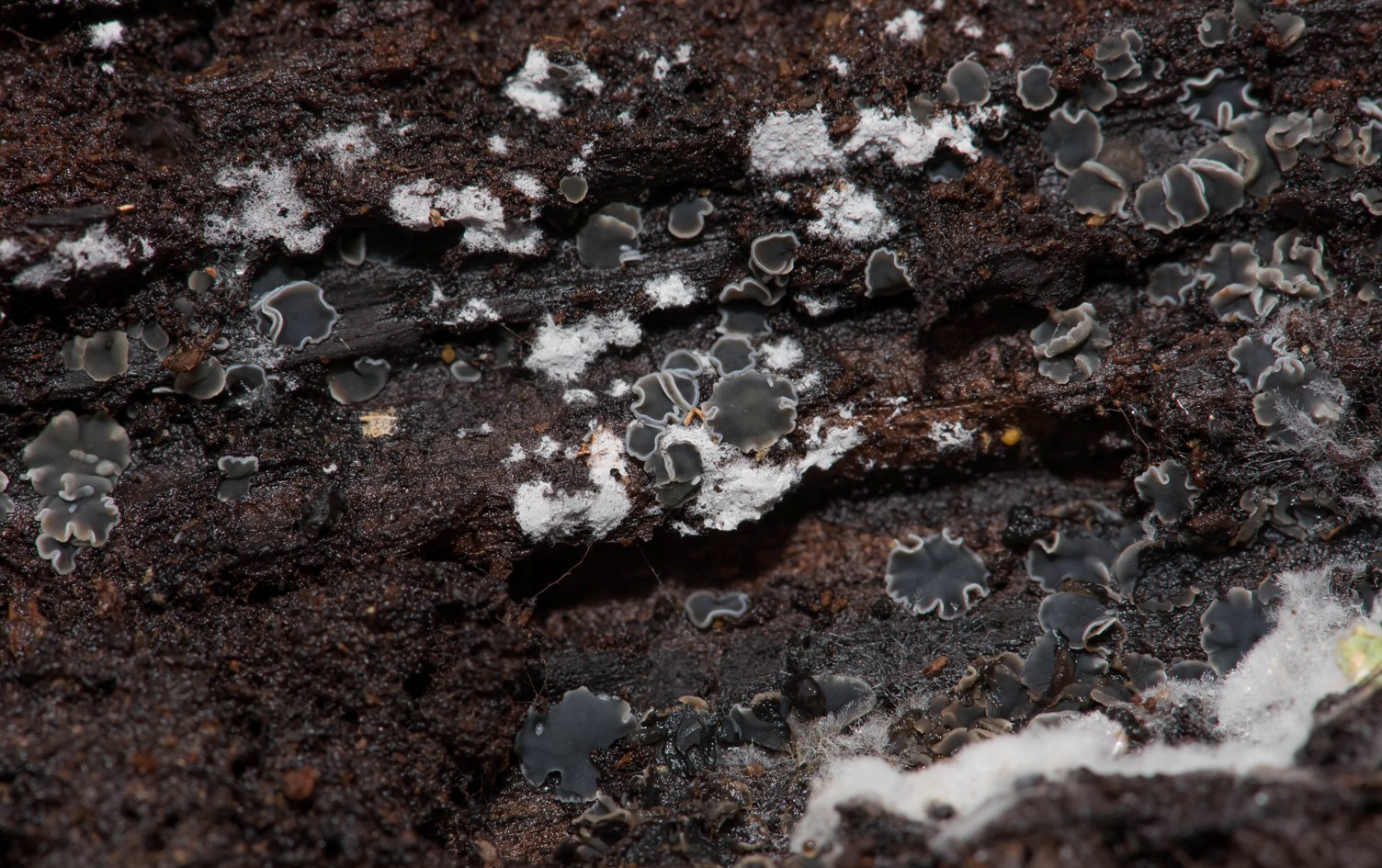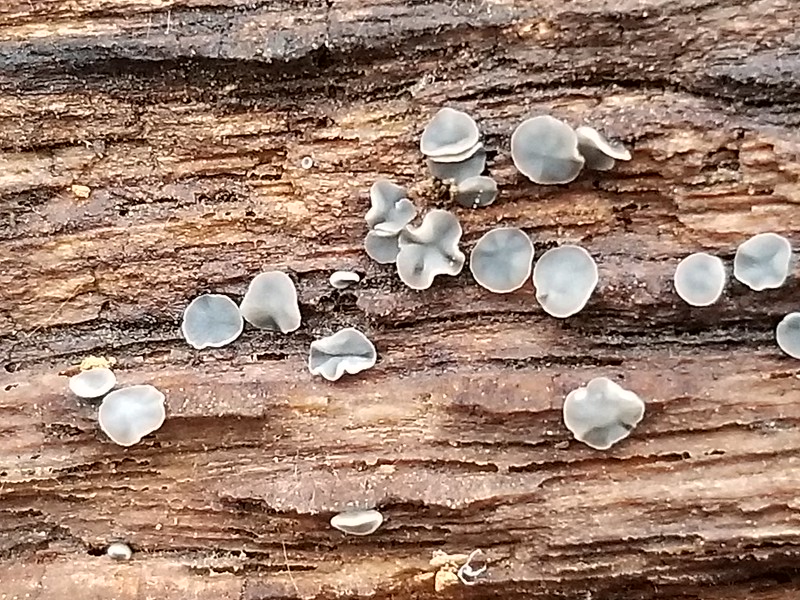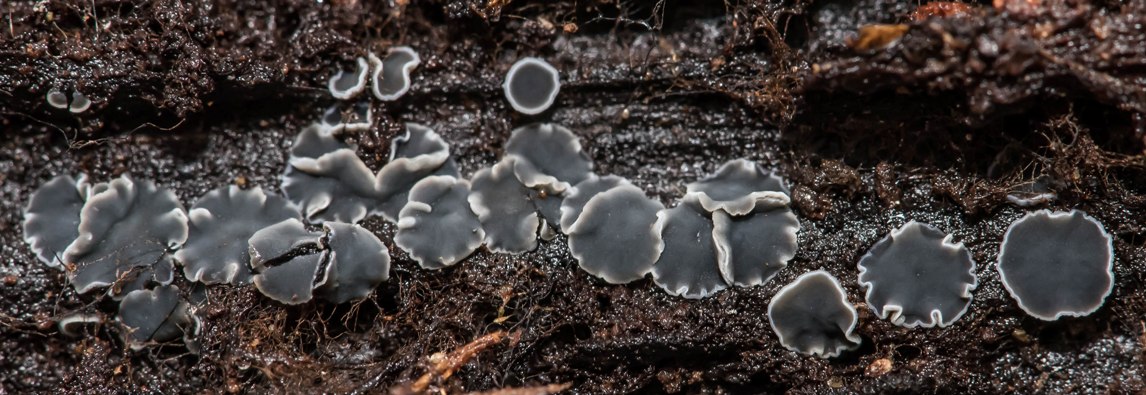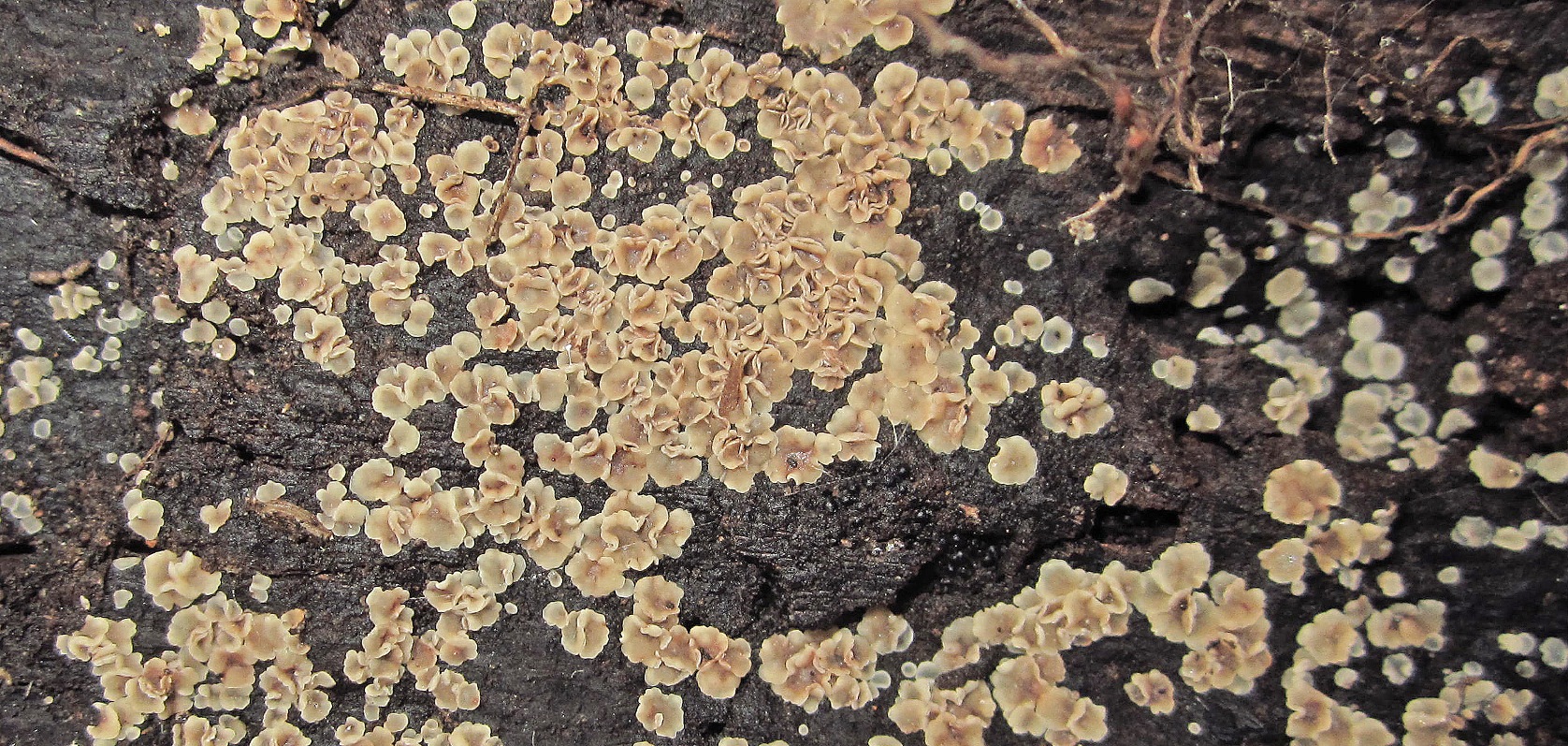Map Snapshot



6 Records
Status
This genus of more than 40 species is difficult and poorly understood (J. Solem, pers. comm.).
Description
Dense clusters on variety of plant hosts, frequently on damp, rotting hardwoods. Fruiting body: Tiny (to 1/16"), round/cup-shaped becoming flat or distorted in age; sometimes anchored on clear/brownish mycelium. Fertile (interior) surface of varying colors from white, yellow, blue, and gray to almost black; white edge when young. Infertile (exterior) surface: Grayish to brownish, covered with down. Stalkless. (J. Solem, pers. comm.)
Seasonality Snapshot
Source: Wikipedia
| Mollisia | |
|---|---|

| |
| Mollisia sp | |
| Scientific classification | |
| Kingdom: | |
| Division: | |
| Class: | |
| Order: | |
| Family: | |
| Genus: | Mollisia |
| Type species | |
| Mollisia cinerea (Batsch) P.Karst. (1871)
| |
| Species | |
|
121, see text | |
| Synonyms[1] | |
|
Aleuriella P.Karst. (1871) | |
Mollisia is a genus of fungi in the family Mollisiaceae[2] , formerly in the family Dermateaceae.[3] The genus contains 121 species.[4]
Species
[edit]- Mollisia amenticola
- Mollisia aquosa
- Mollisia caesia
- Mollisia caespiticia
- Mollisia caricina
- Mollisia casaresiae
- Mollisia chionea
- Mollisia cinerascens
- Mollisia cinerea
- Mollisia cinerella
- Mollisia cinereo-olivascens
- Mollisia cirsiicola
- Mollisia clavata
- Mollisia coerulans
- Mollisia conigena
- Mollisia coprosmae
- Mollisia culmina
- Mollisia dactyligluma
- Mollisia dextrinospora
- Mollisia discolor
- Mollisia erumpens
- Mollisia escharodes
- Mollisia euphrasiae
- Mollisia fallax
- Mollisia fallens
- Mollisia fungorum
- Mollisia fuscoparaphysata
- Mollisia fuscostriata
- Mollisia heterosperma
- Mollisia humidicola
- Mollisia hydrophila
- Mollisia jugosa
- Mollisia juncina
- Mollisia leucosphaeria
- Mollisia ligni
- Mollisia lurida
- Mollisia lychnidis
- Mollisia lycopi
- Mollisia macrosperma
- Mollisia mediella
- Mollisia melaleuca
- Mollisia minutissima
- Mollisia mutabilis
- Mollisia myricariae
- Mollisia nigrescens
- Mollisia olivascens
- Mollisia orcadensis
- Mollisia palustris
- Mollisia poaeoides
- Mollisia populi
- Mollisia rabenhorstii
- Mollisia ramealis
- Mollisia rehmii
- Mollisia sordidula
- Mollisia spectabilis
- Mollisia sphaeroides
- Mollisia stellata
- Mollisia stromaticola
- Mollisia subcorticalis
- Mollisia submelaena
- Mollisia tenuispora
- Mollisia teucrii
- Mollisia typhae
- Mollisia uda
- Mollisia undulatodepressula
- Mollisia ventosa
See also
[edit]References
[edit]- ^ "Mollisia (Fr.) P. Karst. 1871". MycoBank. International Mycological Association. Retrieved 2011-10-08.
- ^ Tanney, J.B.; Seifert, K.A. (2020). "Mollisiaceae: An overlooked lineage of diverse endophytes". Studies in Mycology. 95: 293–280. doi:10.1016/j.simyco.2020.02.005. PMC 7426276. PMID 32855742.
- ^ Lumbsch TH, Huhndorf SM (December 2007). "Outline of Ascomycota – 2007". Myconet. 13. Chicago, USA: The Field Museum, Department of Botany: 1–58.
- ^ Kirk PM, Cannon PF, Minter DW, Stalpers JA (2008). Dictionary of the Fungi (10th ed.). Wallingford, UK: CABI. p. 434. ISBN 0-85199-826-7.




![Spores of one <em>Mollisia</em> species in Howard Co., Maryland (12/30/2015). Fusiform, smooth, hyaline; measured 6.7-8.0 X 2.1-3.0 [3.4] microns. Spores of other species are going to be different! (Photo ID: 46979 - Psn: 100)](https://objects.liquidweb.services/images/201807/robert_solem_Mollisia_sp-WINTR13-1230173613.jpg)